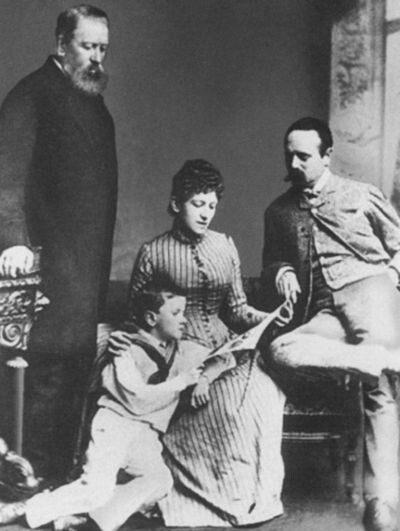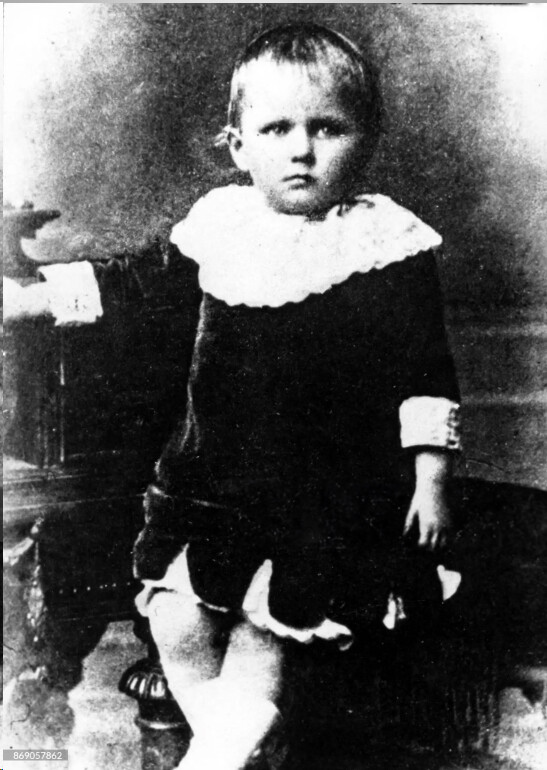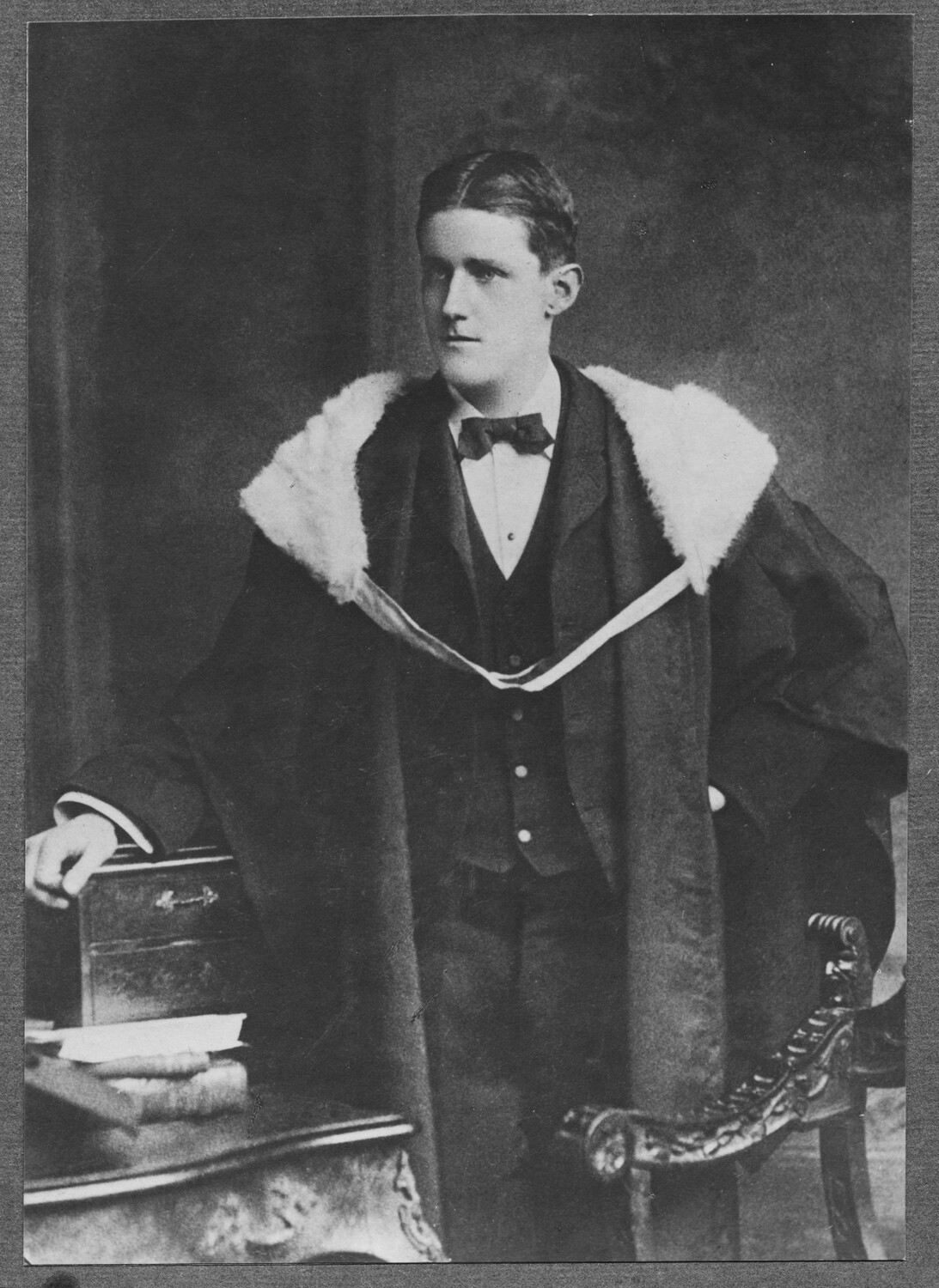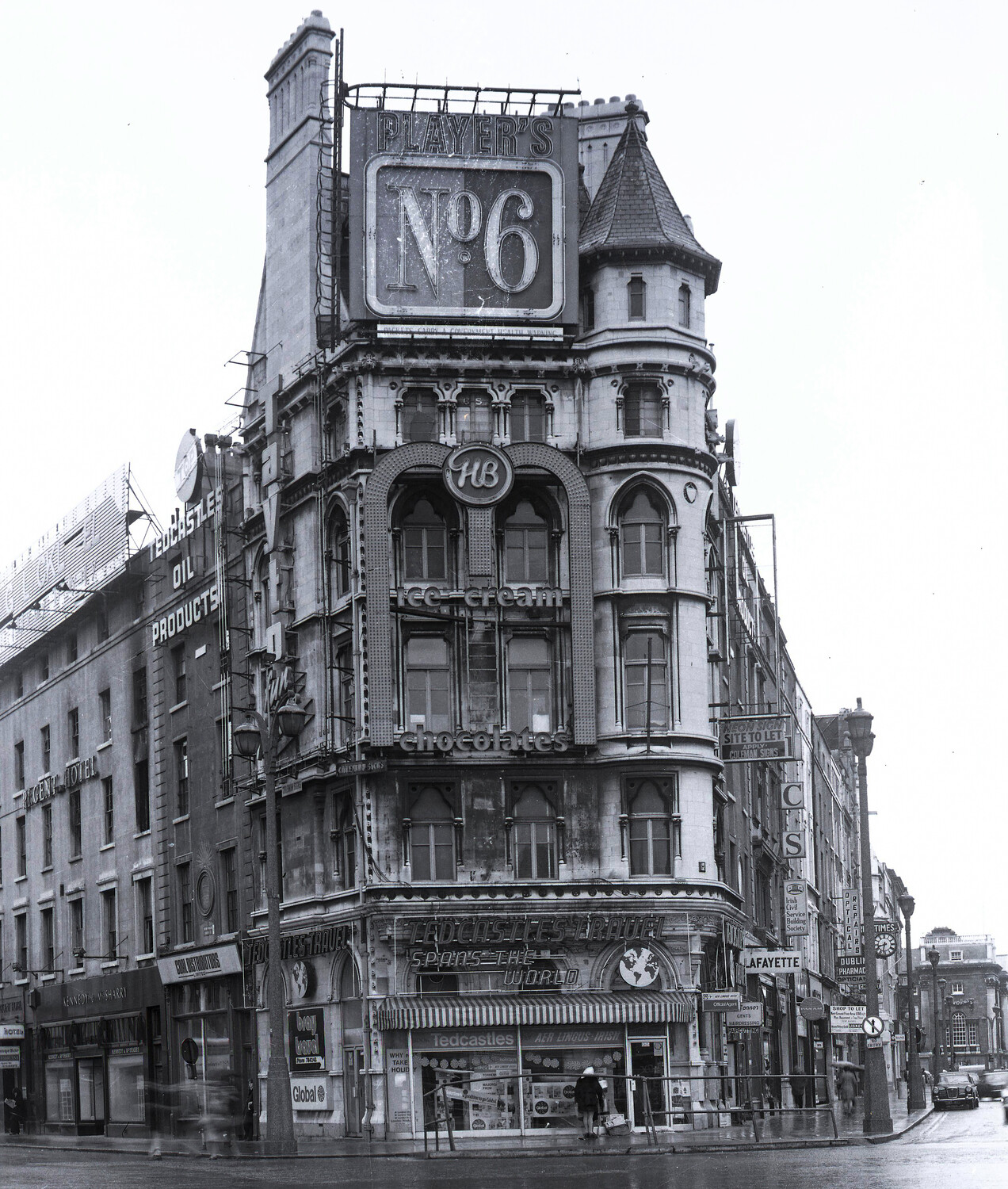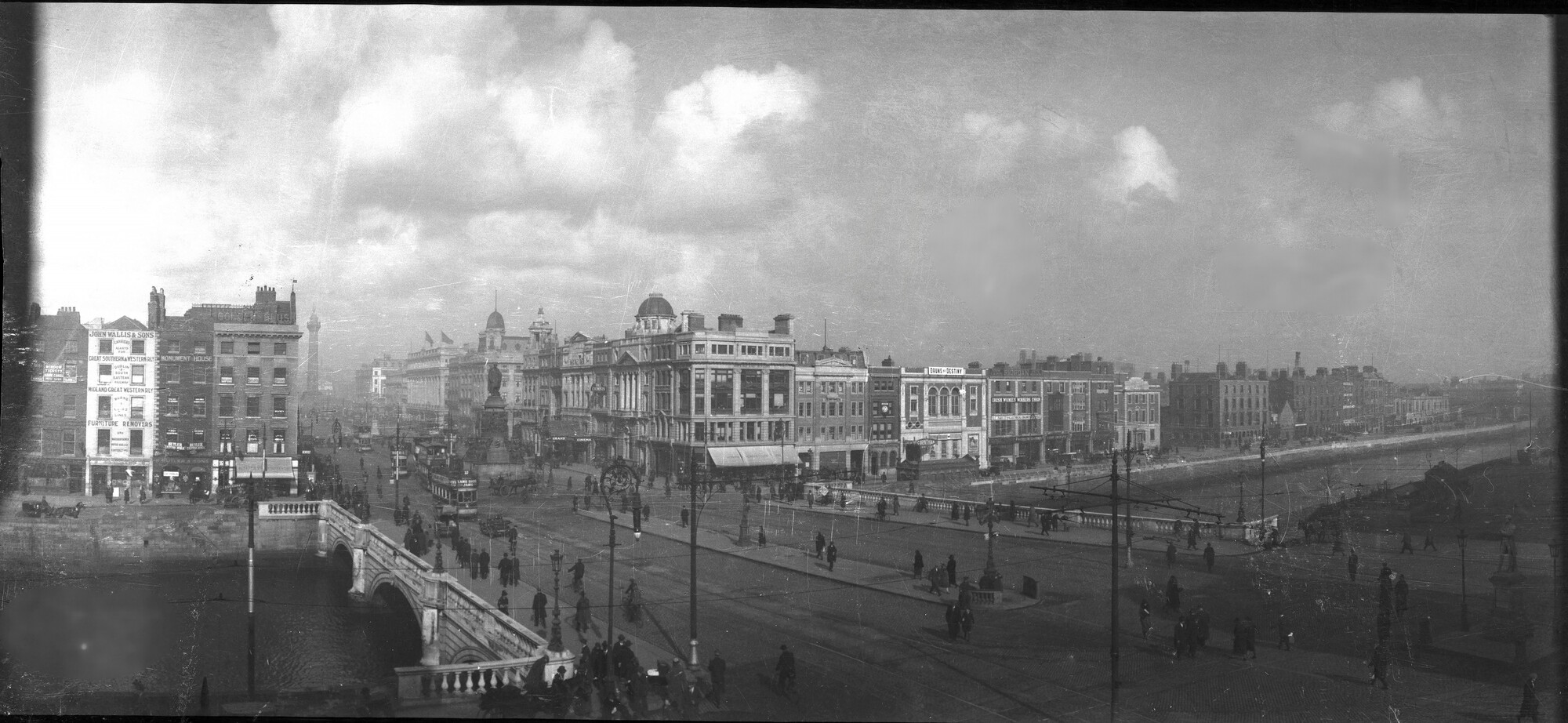Lafayette Photography, founded in 1880 and once described by Joyce himself as “Dublin’s premier photographic artist” (Ulysses, 16.1435–36), played a quiet but enduring role in Joyce’s visual story. From early childhood through to his academic achievements, our studio was the backdrop for several important photographic milestones in Joyce’s life.
In 1888, James Joyce, then just six and a half, sat for a formal family portrait at our Westmoreland Street studio, alongside his parents John and Mary Jane, and his maternal grandfather, John Murray. Taken just before his departure for Clongowes Wood College, this image remains one of the earliest known photographs of Joyce—a touching visual echo of a pivotal childhood moment.
Even earlier, around 1885, another studio portrait (possibly also by Lafayette) shows the young Joyce dressed in an ornate ruff collar, his expression serious and striking. Years later, he would send this photograph to Nora Barnacle, playfully remarking on his “fierce-looking” childhood appearance.
Our connection with Joyce didn't end there. When he graduated from the Royal University of Ireland (now part of University College Dublin), he once again turned to Lafayette Photography. The resulting portrait, captured in 1902, features Joyce in full academic dress—standing beside our famous studio chair, a prop that has become iconic in many of our historic portraits.
This image was reproduced and shared widely in his early years abroad, helping to form the visual identity of the young writer as he set out from Dublin to make his name in Europe.
Despite once writing that photography “simply wasn’t art in a word,” Joyce returned to the medium repeatedly throughout his life—for personal mementoes, family connections, and even literary inspiration. From Lafayette’s cabinet prints to avant-garde portraits in later years, photography became a silent companion to Joyce’s public and private life.
At Lafayette Photography, we are honoured to have contributed to that journey. Our archive still holds these images—testaments not just to a great writer, but to a Dublin life captured through the lens of tradition, family, and artistry.
